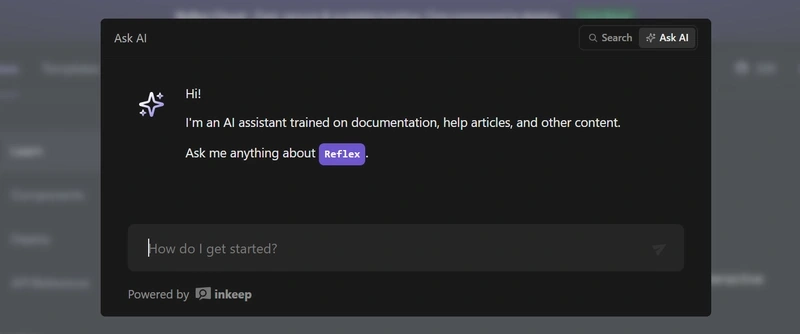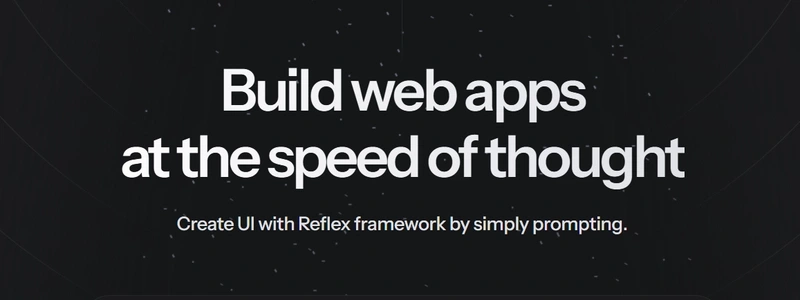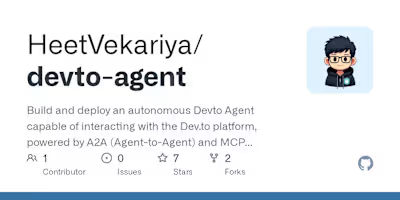Reflex: The Python Way to Build Full-Stack Web Apps
The Rising Demand for Tech and AI Integration
The tech industry is witnessing high demand, particularly with the rise of AI. AI-integrated applications are quickly becoming the most sought-after products, and it’s no surprise, that every 4 out of 5 products launched on ProductHunt are labeled with "AI."
However, to interact with these AI-powered products, we need to create user interfaces that are not only easy to use but also enhance the overall user experience. As developers, we have multiple options for building interfaces, including websites, mobile applications, GUIs, and more. Among these, websites have emerged as the most preferred choice.
The Popularity of Python and Its Role in Development

Popularity of Programming Languages
Python has frameworks like Django and Flask to help developers build the backend, but when it comes to client-side development, JavaScript dominates. As reported by W3Techs, 98% of websites use JavaScript to build the frontend.
For Python developers, this means learning a client-side language like JavaScript is essential to build a full-stack application.
Reflex: A Game-Changer for Python Developers
Recognizing this challenge, Nikhil Rao came up with a solution that allows developers to build full-stack apps using just Python.
How? Let me introduce you to Reflex – the Python framework that enables you to build entire web applications using only Python.

Reflex Introduction
What is Reflex?
Reflex is an open-source Python framework that empowers developers to create full-stack applications using only Python. With Reflex, there's no need to learn a separate frontend language, everything can be done in Python.
Key Benefits of Using Reflex:
No need to learn new languages or frameworks - use Python for both the frontend and backend.
Deploy with ease - just run a single command:
reflex deploy.60+ pre-built components ready to use.
Support for custom UI components.
Seamlessly integrates with Python libraries from PyPI.
Built-in database management, authentication, routing, state management, and more.
The simplicity and ease of use of Reflex have made it incredibly popular among the Python community, earning over 22k stars on GitHub. Additionally, large organizations have adopted Reflex for their projects.

Organisations using Reflex
Is Reflex really easy to use?
You might think that learning a framework to build an entire app would be time-consuming. However, I can assure you that Reflex is simple to learn. I’ve personally used it to develop three hackathon projects, all of which secured top positions. I took First place in Reflex's own Hackathon and Second place twice at Quira’s Hackathons.
Reflex's documentation is clear and easy to follow, so you’ll be up and running in no time. Plus, if you have any doubts, you can use their chatbot, specifically fine-tuned for Reflex queries, directly inside the documentation. If that’s not enough, you can always reach out to the Reflex community on Discord.

Assistant in Docs
Reflex.build: The Next Big Thing
But wait, there’s more! Reflex has recently launched Reflex.build, a platform where you can build Reflex apps just by giving a prompt. You can learn more about it here.

Reflex.build Introduction
Ready to Get Started with Reflex?
Now that you know how Reflex can streamline your development process, why not give it a try? Whether you’re building a simple application or a full-fledged web app, Reflex provides everything you need to do it with Python.
To help you get started, here are some helpful resources:
Reflex on GitHub – Access the source code and contribute to the project.
Reflex Documentation – A comprehensive guide to help you set up and start using Reflex.
Reflex Discord Server - If you encounter any questions or need assistance
Reflex is changing the way Python developers build full-stack applications, offering a simpler, faster, and more efficient workflow. By eliminating the need for additional frontend languages, it lets you focus on building what truly matters your application. With its growing community and open-source nature, Reflex is developing the way for Python to become a complete tool for both backend and frontend development.

Don't Wait, Ship It Faster
Like this project
Posted Apr 2, 2025
I helped Reflex to reach wider developer community, showcasing their product which facilitates developers to build web apps in pure python.
Likes
0
Views
21
Timeline
Mar 14, 2025 - Mar 16, 2025






